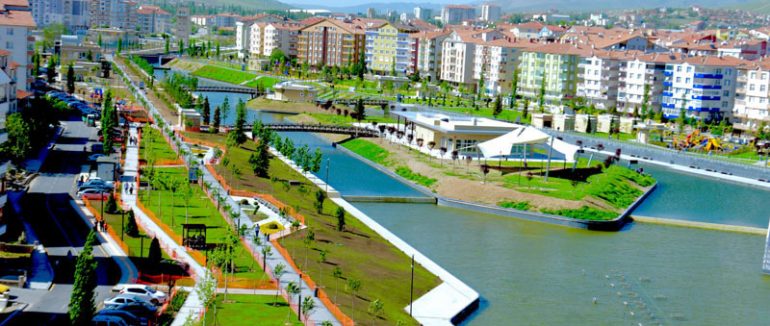Kırşehir, formerly Macissus (also spelled Mocissus and Mokissus) and Justinianopolis, is a city in Turkey. It is the capital district of the Kırşehir Province. According to 2000 census, population of the district is 115,078 of which 88,105 live in the city of Kırşehir.
History
The history of Kırşehir dates back to the Hittites. The Romans called the city Macissus, and after the city was rebuilt by the Byzantine Emperor Justinian (527-565), it was renamed Justinianopolis. This name was retained until the end of Byzantine rule. The Turks took the city in 1071 and bestowed the current name. In Turkish, "Kır Şehri" means "Steppe City". It became the chief town of a sanjak in the Ottoman vilayet of Angora, which possessed 8000 inhabitants, most of them Muslims.
In the 19th century, Kırşehir was attached to the sanjak of Ankara. In the year 1921, Kırşehir was made capital of its own province. Kemal Atatürk visited the city in 1921 and 1931. Kırşehir was once known as "Parnassos" or "Mikissos". During the period of the Hittites, the basin of Kırşehir was known as the country of "Ahiyuva". This basin also took the name Cappadocia at the time of the Romans and Byzantines.
It became a province in 1924. On 30 May 1954, it was accepted as a district of Nevşehir. Later, the towns of Kırşehir were divided between Ankara, Yozgat and Nevşehir. In 1957, Kırşehir became a province again.
Ecclesiastical history
Under the Latin name Mocissus it remains a titular metropolitan see in the former Roman province of Cappadocia. Procopius (De ædif., V, iv) informs us that this fortified site, in north-western Cappadocia, was constituted metropolis of Cappadocia Tertia by Justinian, when he divided that province into three parts, and gave it the name of Justinianopolis. Nothing is known of its history, and its name should perhaps be written Mocessus. There is no doubt that the site of Mocissus, or Mocessus, is that which is occupied by the modern town sometimes called Kir-Sheir. This metropolis figured in the Notitiæ episcopatuum until the twelfth or thirteenth century. Only a few of its titulars are known: the earliest, Peter, attended the Council of Constantinople (536); the last, whose name is not known, was a Catholic, and was consecrated after the Council of Florence by Patriarch Metrophanes of Constantinople.










